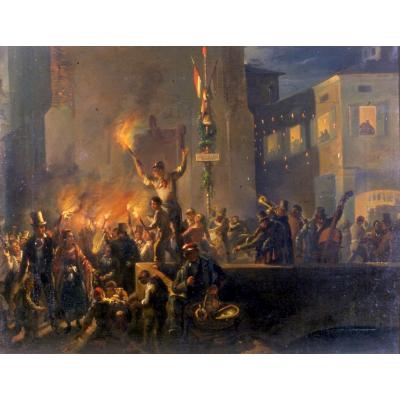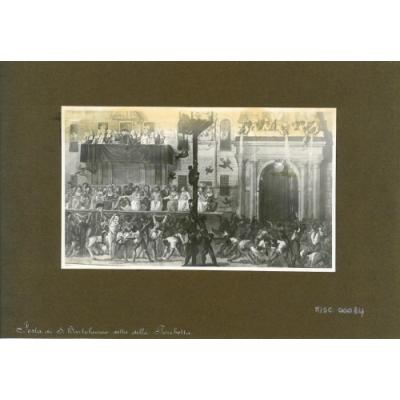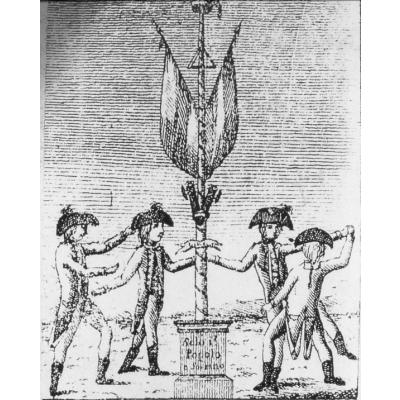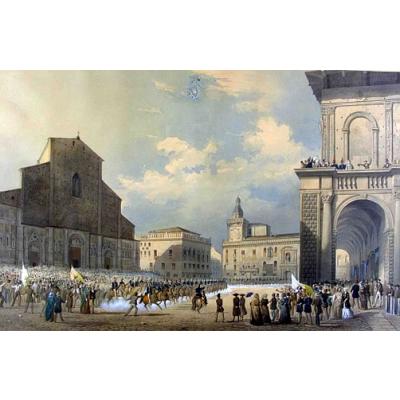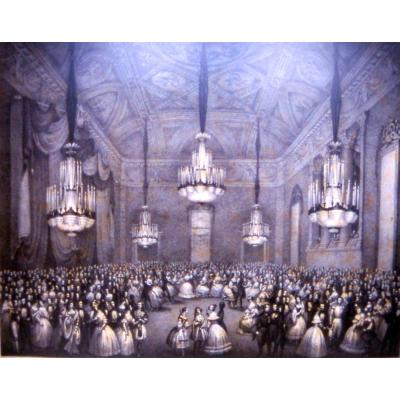Schede
On June 18, 1796, it was about evening, the spearheads of the French army enter Bologna, coming from the road of Crevalcore. They pass through Porta San Felice and cross the city centre, directing to the municipal building and notifying the whole army’s arrival. The city centre is joyful, full of coloured decorations, flowers and wreaths: the Orefici quarter, in fact, is celebrating its Eucharist ten-year anniversary, the city is full of peasants coming from outside the centre and also the great Corpus Domini holiday is celebrated. With beating drums, the 7.000 soldiers of general Augerau pass through it, going out to south through Porta Maggiore, then encamping before Savena’s bridge. 1.000 men, instead, appropriate of the square, putting sentries in the most important points and letting officers lodge in the best private houses, paid by the citizens, as usual. During the night, the young General Bonaparte gets into the city too, without letting himself be noticed.
These episodes turn Bologna upside down, transforming ancient (balances) and deep-rooted traditions, and open the door to completely new customs. The national holidays – religious as Corpus Domini, S. Petronio, Madonna of S. Luca, etc., or profane as the "Festa della porchetta", the town festivals and the ancient fairs – undergo some hard “updatings”; nevertheless, new celebrations are introduced, not dedicated to saints but to lay and political matters. So, the giacobine holidays are born: the party around the tree of freedom, main symbol of the new political orientation, the procession of January 6, 1798, that triumphantly carries the urn of the first martyrs of the Italian Independence Luigi Zamboni and Giovanni De Rolandis, the Federation’s Day, the patriotic feasts… afterwards, they will be joined by more “traditional” holidays, as those in honour of important generals or, in 1805, even of emperor Napoleon, etc..
The lay holidays are accompanied by some rituals that will keep on for the whole century: military parades with drums beating, plushy nocturn illumination, great fireworks. In the Restoration period, things didn’t change so much: of course there was a return, with big pomposity, to the traditional religious holidays and to the popular, there was high usage of Te Deum for thanksgiving, solemn religious functions, accompanied by rich apparatuses and concurrence of civil, military, religious and people authorities, highly proposed even after the Unification, as if it was a sign, for the population, of the presence of the benefic hand of God on the political governors of the time. Of these years, we may recall with no doubt the big parties for the amnesty of the prisoners, both common and political, permitted by Pio IX at the moment of his political ascension or the big parties for the permission of the Constitution, always in 1848. The fire two year period 1848 – 1849 brings to the surface “revolutionary” rituals: trees of freedom are again erected, around them people sing and dance, there are parties even for the volunteer troops which leave for the war… it is again a moment for lay holidays, but often accompanied by the presence of “friendly” priests. By proclamating the Italy Kingdom (1861) the thanksgiving Te Deum, offered by the philo-piedmontese authorities or by the new governors, will be accompanied by a succession of parties dedicate to the new martyrs of Independence. What has more and more importance, besides the "savoyard" party of the Statute, celebrated on the first Sunday of June, are the parties in occasion of the events of August 8, 1848 (in Bologna; in other cities, they are events of epic moments of local popular riot), of the battle of Solferino and San Martino, of September 20 and then the parties in memory of the country’s fathers, first of all Giuseppe Garibaldi (June 2, 1882).

